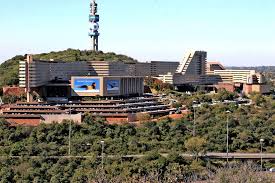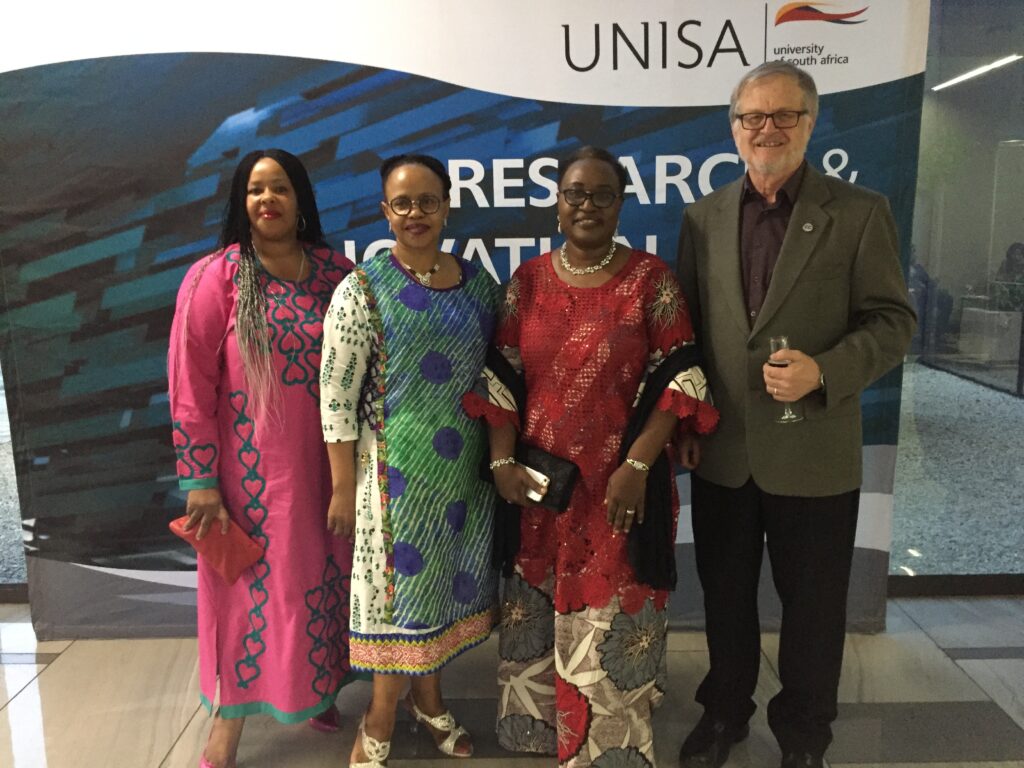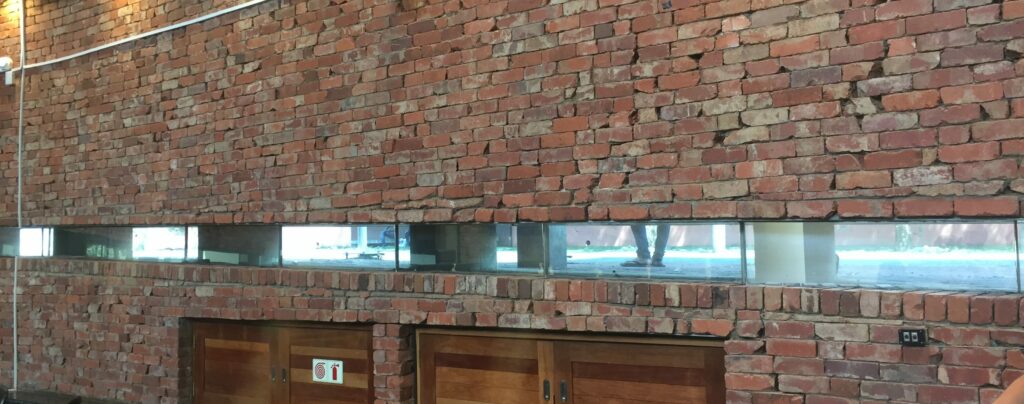Although I have been to South Africa before I had never had the opportunity to visit the world’s oldest distance education university! Unisa is HUGE – I heard varying numbers ranging from 375,000 to 450,000 students. The variations relate in part deciding if a student should be counted if they take a term off, can’t afford tuition or are otherwise not currently enrolled in a course, though still actively enrolled in a program of studies. In any case, courses with 15-20,000 concurrent students are not unknown. Given my experience of distance education systems two whole order of magnitudes smaller than those Unisa deals with made me wonder if I was the right expert to be addressing these distance education colleagues.
Unisa has numerous student centres around the country but the flagship reigns like a giant space ship on the hill as you enter the capital city of Petoria. It is a huge building and begs the question of who is actually there if the students are all at a distance. I came to understand that UNISA is also major provider of Masters and especially PhD students, many (or most) of whom are resident at Unisa. And in addition the number of staff to develop, support and deliver courses on this scale, also requires huge number of office spaces.

Each year Unisa organizes a research week in which they invite one or more keynote speakers to kick of the week and then each of the faculties is expected to convene a series of presentations, roundtables, keynotes and panel sessions focused on research related to the theme, from their discipline perspective. This was the first time that the research week had focused on Open and Distance Learning (ODL) research itself. I find that this lack of focus and energy on what makes distance education unique a bit puzzling. However, I realize that Unisa like too many other distance education institutions hires faculty and is judged, not by the research nor the quality of their ODL programming, but by the research in traditional disciplines – similar to campus based universities. Thus myself, my good friend and co-author Olaf Zawacki-Ricter from Germany and a new friend Christine Ofulue from Nigeria Open University were invited as keynotes.
They certainly put us to work. Besides the opening keynote and panel discussion, Olaf and I did two half day workshops on research theory and techniques, I did two other keynotes at the Business and Graduate Studies Colleges and 3 more panel discussions. All and all it was a bit much, but on the plus side, we were treated royally with many a fine restaurant meal and opportunity to socialize with colleagues.

The university also arranged a half-day visit to Johannesburg where we visited the infamous Fort Jail where both Nelson Mandala and Mahatma Gandhi had been imprisoned. The prison tour graphically illustrated the almost unbelievable cruelty inflicted by both white and black wardens on the prisoners. But even more shocking was the differential treatment down to food rationing, showering and actual square sleeping space given to the highly segregated prison blocks. Black prisoners ate their extremely meager food from unwashed plates, sitting on the bare concrete only feet away from open and often overflowing latrines. Of course some of the prisoners were convicted of theft and other crimes but many were being held (up to 180 days without charge or trial) for political activities or even for being outside an area to which you were constrained by their pass book.
This sobering tour was relieved by a quick tour of the South African Supreme Court, building – a building constructed from bricks of the old cell blocks on the same Jail site. The Court building is rich in symbolism, such as the building pillars resembling a tree under which the traditional chief would meet with citizens to dispense justice. The courtroom itself was slightly sunk into the ground and very narrow windows on the side that allowed judges to see only the legs from the knee down of pedestrians walking between buildings. This view encouraged judges, lawyers and visitors to acknowledge persons but not to be able to judge them based upon their gender, their nationality, their religion or their cultural or tribal background.

We then drove through Johannesburg – the only major city in the world not established on a river, lake or sea-coast. The city was established to serve the gold and later coal and diamond mines in the area. I knew the City had a mining history, but I didn’t realize the city was actually on the mines, with great piles of slag visible as we drove through the suburbs. Our tour guide even talked of illegal mining still going on within the city and the near calamity of a major natural gas line being disturbed by blasting from illegal miners within the city limits.
Our tour ended with a visit to the Apartheid Museum. Though of course I am old enough to remember reading newspaper accounts of the Soweto uprisings, the Sharpville Massacre, the murder of Steve Biko, Nelsons Manadal’s release from prison and other headlines, I never really understand the all encompassing pervasiveness of the attempt to rule a country based on racial origins. I also came to understand the forces of industrialization on under educated whites and the fear that drove them to try to maintain their excusive privilege – much as the Trump supporters today struggle to regain hegemony and long lost wealth and influence. On the plane home I read a book about a police spy and his successful penetration of white anti-apartheid organizations both internally and outside South Africa. I had no idea of the relentless war conducted by the South African police to murder and imprison activists, both black and white, within and outside of the country.
I also had time to consider the strategic efforts of Unisa to ‘Africanize’ the curriculum. During one of the panel sessions, one young, white, female academic asked the panel members if Africanization of the curriculum meant that it had to be taught by black Africans. The response from the panelists was unclear. However noting the complete absence of any but black Africans in executive positions and a few private conversations makes me realize that the wounds of colonialism and racism will take a very long time to heal.